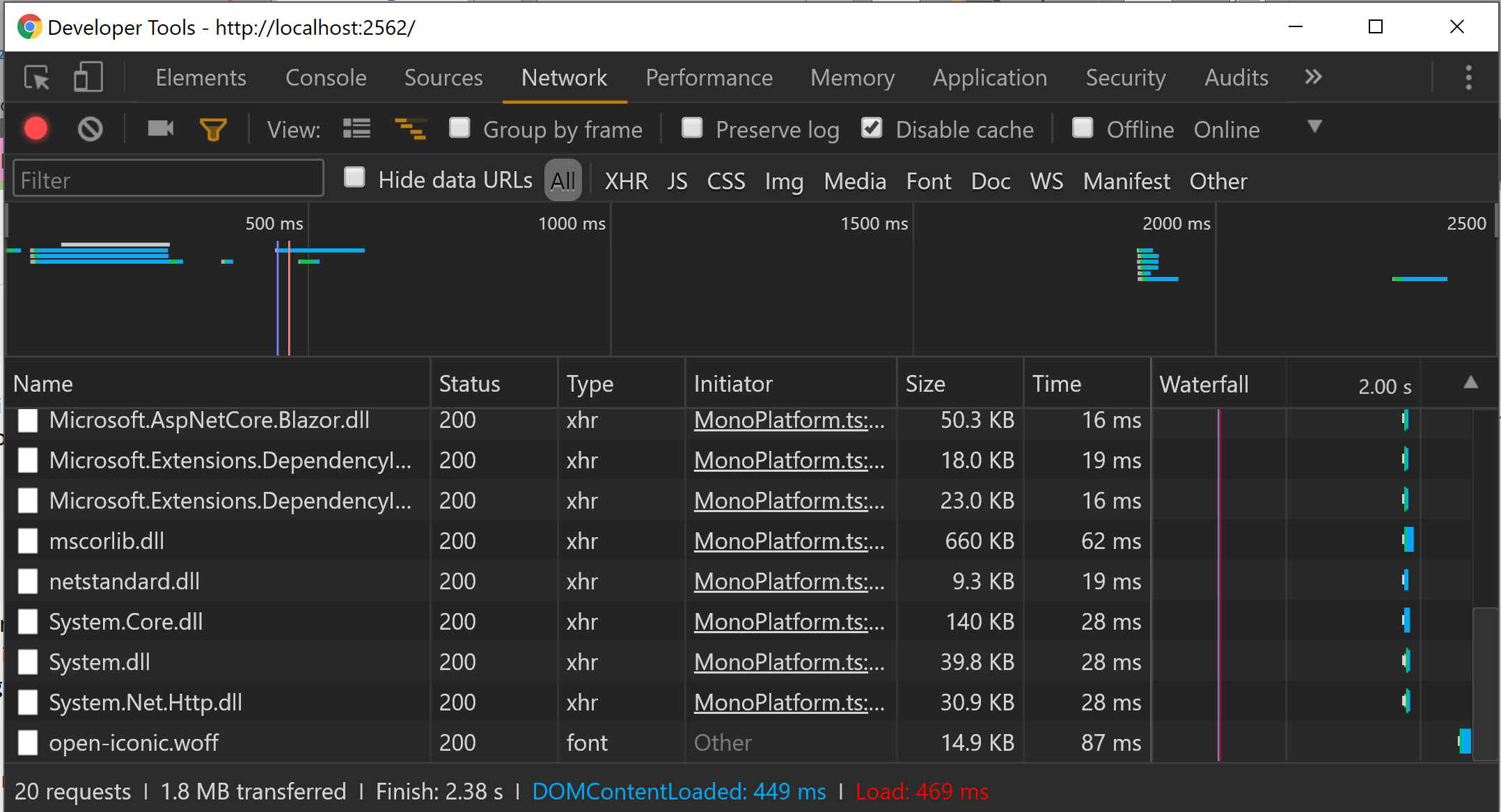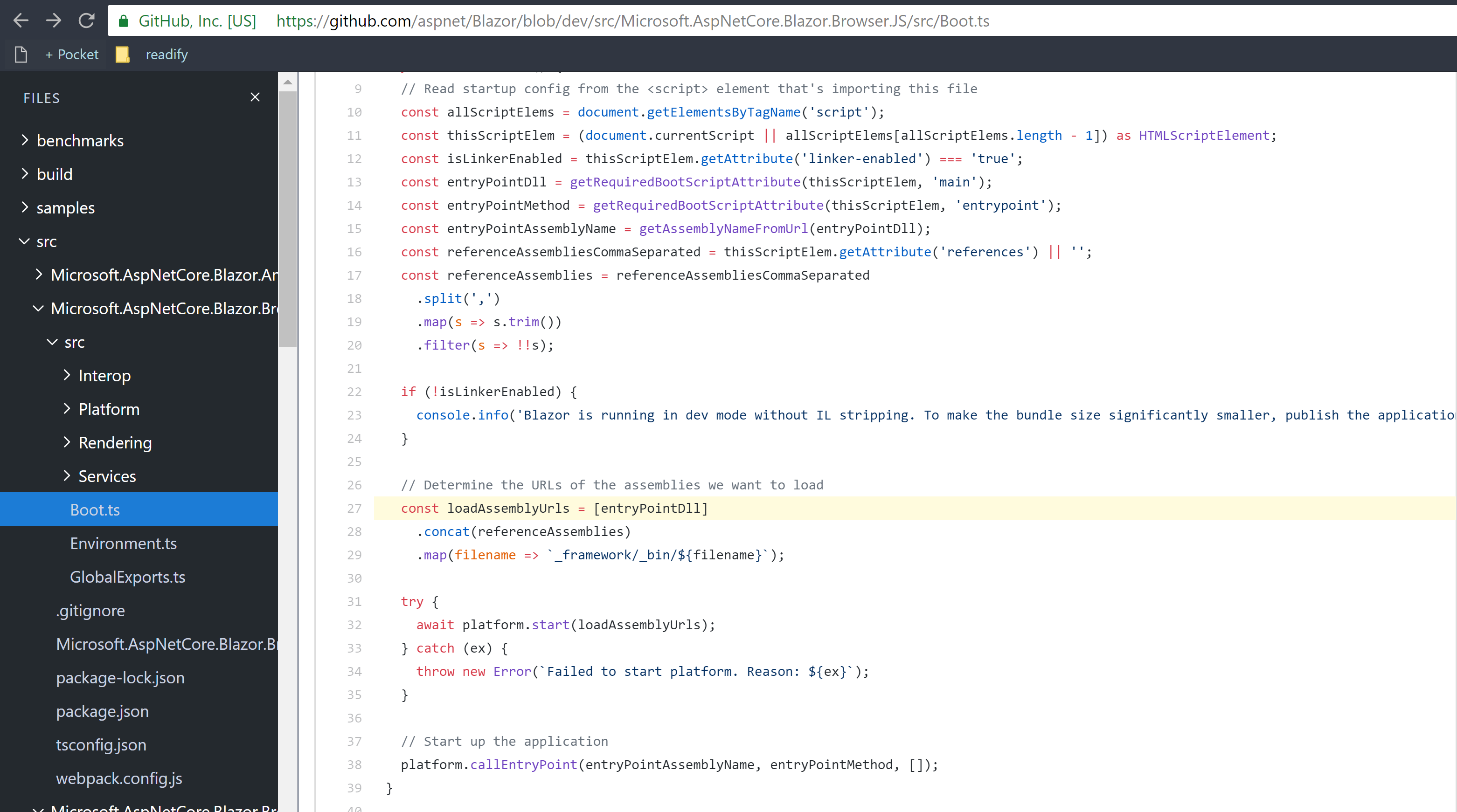WebAssembly promises native-speed apps in our browsers, and opens the gates for all programming languages by being a compilation target. Blazor is the .NET flavour of WebAssembly frameworks, just recently released as an alpha, made possible since mono was compiled to WebAssembly.
Here’s some a few things to know about it.
Code snippets from https://blazor.net
It’s experimental
Don’t use it for anything real just yet. It’s considered an alpha, and could either change drastically or disappear. Having said that, there is a lot of excitement about it (from .NET developers anyway) and if WebAssembly lives up to its promises, then Blazor seems like just the right way to bring in .NET
It’s web components with razor pages
A component in Blazor looks like this:
@page "/counter"
<h1>Counter</h1>
<p>Current count: @currentCount</p>
<button class="btn btn-primary" onclick="@IncrementCount">Click me</button>
@functions {
int currentCount = 0;
void IncrementCount()
{
currentCount++;
}
}
Razor is an awesome, intelligent, terse syntax for server generated HTML that’s been in use in ASP.NET since MVC 3 in about 2010.
There’s DLLs in your browser now
When you load a Blazor app and open the network tab in chrome tools, it looks like this:

These are plain old DLLs from the .NET framework, or compiled by dotnet build, shipped over the wire to your browser so the mono runtime can load them. If you’re thinking this is going to bloat the size of the application a lot, the mono linker removes unused assemblies from the build. The template app is less than 2MB over the wire, which seems pretty good for an experiment.
It’s NOT Silverlight
“As you can see, Blazor is not just a new Silverlight.”1 There will be no XAML (look at Ooui for that).
Blazor.js ties it all together
Blazor.js contains the code that initialises the mono runtime and loads the assemblies. You can see the typescripted bootstrapper
This code looks at the element in the DOM that lists the assemblies needed for the app to run, and loads them.
It’s got dependency injection
DI is something I just can’t live without in a complex codebase, and something I still desire in simple ones. Blazor components get injected either by using the @inject syntax or just by including a parameter in constructor of the component’s class.
@page "/customer-list"
@using Services
@inject IDataAccess DataRepository
<ul>
@if (Customers != null)
{
@foreach (var customer in Customers)
{
<li>@customer.FirstName @customer.LastName</li>
}
}
</ul>
Routing is setup in the component
Right now, routing is achieved by simply placing the relative route in the component alongside the @page declaration, as in the above @page "/customer-list". You can resolve multiple routes to the same component by listing multiple @pages, and parameters are supported with a combination of placeholders and attributes.
@page "/RouteParameter"
@page "/RouteParameter/{text}"
<h1>Blazor is @Text!</h1>
@functions {
[Parameter]
private string Text { get; set; } = "fantastic";
}
People are already keen
“Browser + Razor = Blazor”, and despite the miscreant “l”, I can forgive it because it sounds better than “Brazor”. But it’s not easy to combine into other cool-sounding names. But the point is, people creating things with it and it’s just a matter of time before we have some frankensteinian mashups of flux, bootstrap and so on.
What would you call the jQuery API for Blazor? jBlazedly? I called it.
Get started with Blazor here: https://blazor.net/docs/get-started.html
-
https://learn-blazor.com ↩
